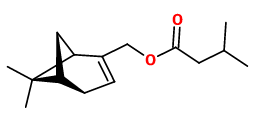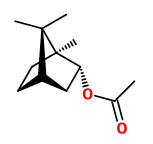Valeriana officinalis L. - Valerianaceae - common valerian, Echter Baldrian, Arznei-Baldrian, Katzenkraut
Perennial herb, 0.40-1.60 high, native in Europe an Asia, naturalized in northeastern North America; leaves opposite, pinnate; flowers in cymes, white to pink. Valerian root extracts are most often used to treat insomnia.
„Valerian has been used as a medicinal herb since at least the time of ancient Greece and Rome. Its therapeutic uses were described by Hippocrates, and in the 2nd century, Galen prescribed valerian for insomnia… In addition to sleep disorders, valerian has been used for gastrointestinal spasms and distress, epileptic seizures, and attention deficit hyperactivity disorder. However, scientific evidence is not sufficient to support the use of valerian for these conditions.“
http://ods.od.nih.gov/factsheets/Valerian-HealthProfessional/
flowers
The flower scent of living V.officinalis is rather a sweet one and does not contain the unpleasant smelling valeric acid or isovaleric acid which are major components of the hydrodistilled flower oil. Headspace samples from unpicked valerian flowers contained lavandulyl isovalarate (15.0%), lavandulyl 2-methylbutyrate (0.6%), and lavandulol (1.6%), (E,E)-α-farnesene (7.6%), 3,4-dimethoxytoluene (4.7%), (Z)-3-hexenyl acetate (4.5%), p-methylanisol (3.6%) and methyl eugenol (2.1%).
[Flower scent of some traditional medicinal plants., Brunke, E.J., Hammerschmidt, F.J., Schmaus, G., In ACS symposium series (USA), 1993, 282-295]
roots
Among the many sesquiterpenoid compounds present in V.officinalis root oil, (-)-maaliol sticks out: The higher the content, the finer the character of the scent of the oil. The actual scent carrier proved to be the ester of isovaleric acid with (-)-myrtenol. In addition, the acetates of (-)-myrtenol and (-)-borneol play an olfactory role.
[Ohloff, Günther. „75 Jahre Riechstoff‐und Aroma‐Chemie im Spiegel der Helvetica Chimica Acta. Teil I.“ Helvetica Chimica Acta 75.5 (1992): 1341-1415]
Main alkaloid of the root (0.03%) is N-(p-hydroxyphenyl)-ethyl actinidine, and the cat-attratractant actinidine is shown to be also present in the roots.
[Isolation, structure and synthesis of alkaloids from Valeriana officinalis. L., Torssell, K., Wahlberg, K. , Acta Chem Scand, Vol.21, 1967, 53-62]
http://actachemscand.org/pdf/acta_vol_21_p0053-0062.pdf
[Über monoterpenoide Valeriana‐Alkaloide. Gross, D., Edner, G., & Schütte, H. R., Archiv der Pharmazie, Vol.304(1), 1997, 19-27]
„As they dry, exposed valerian roots and rhizomes develop a characteristic offensive odor resembling that of sweaty socks or dirty underwear (due to formation of isovaleric acid)… The volatile oil from the root, composing 0.2% to 2.8% of the total substance present, has as its main components bornyl acetate and bornyl isovalerate. In different subspecies of V. officinalis, the bornyl acetate content may vary from 0.45% to 35% of the volatile oil.
… if it is assumed that the volatile oil content of the root is high (e.g., 2.8%), and little bornyl acetate is present, some 30 to 40% of the volatile oil (i.e., ∼0.9% of the root), might be capable of yielding isovaleric acid. An additional small isovalerate contribution might be found from the breaking down of valepotriates. Hence up to a total of 1% of the root might be converted to isovalerate. It is very likely that isovaleric acid possesses anticonvulsant properties…“
[Could valerian have been the first anticonvulsant?., Eadie, M.J., Epilepsia, 45(11), 2004, 1338-1343] http://onlinelibrary.wiley.com/doi/10.1111/j.0013-9580.2004.27904.x/pdf
There are several subspecies, cultivars, and chemotypes of V.officialis known. Hence the composition of the extracts from roots and rhizomes is very variable. Typical compounds found are isovaleric acid, bornyl acetate and bornyl isovalerate, sesquiterpenoids like valerenic acid and valerenal:
„The volatile constituents from roots of Valeriana officinalis L. were investigated using GC and GC/MS methods. Valerianae radix samples were obtained from retail pharmacies of different European countries. The roots of 15 V. offcinalis samples yielded 0.19-1.16% essential oil on a dry weight basis. The basic oil components among the identified 86 compounds were bornyl acetate (2.9-33.7%), α-fenchene (0-28.3%), valerianol (0.2-18.2%), valerenal (tr-15.6%), isovaleric acid (0-13.1%), camphene (0-11.1%) and valeranone (0.5-10.9%). Bornyl acetate/valerenal chemotype was characteristic for 9 of the 15 samples of valerian roots from different European countries. Some samples did not contain α-fenchene and camphene (Germany, Czech), isovaleric acid (France, Moldova, Russia 2) and valerianic acid (Estonia, Ukraine 1, Scotland, Moldova, Russia 1). Valerian root oil from Estonia was rich in essential oil, bornyl acetate (33.7%), valerianol (16.8%) and valeranone (9.5%).“
[Variation in the composition of the essential oil of commercial Valeriana officinalis L. roots from different countries. Raal, A., Arak, E., Orav, A., Kailas, T., Müürisepp, M., Journal of Essential Oil Research, Vol.20(6), 2008, 524-529]
„Twenty compounds were identified which accounted for 88.11% of the total oil of V. officinalis… The most abundant compounds were patchoulol (16.75%), α-pinene (14.81%), β-humulene (8.19%) and α-bulnesene (7.10%)… The chemical profiles of the V. officinalis essential oil in this study was different from those of previous reports (i.e., the content of bornyl acetate was analyzed as 11.3% by Pavlovic et al., and the patchoulol
content was only 1.2% in the oil analyzed by Huang et al.). The differences may be attributed to a
different geographical environment, cultivar type, seasonality, physiological age of the plant, and the
method of oil isolation.“
[Wang, Jihua, et al. „Chemical analysis and biological activity of the essential oils of two valerianaceous species from China: Nardostachys chinensis and Valeriana officinalis.“ Molecules 15.9 (2010): 6411-6422] http://www.mdpi.com/1420-3049/15/9/6411/pdf
„…the volatile metabolites from V. officinalis root were analyzed by GC-MS… The root sample contained a complex mixture of volatile compounds, but the two most abundant volatiles were identified as bornyl acetate and valerenal. Although the metabolite composition of valerian varies with the ecotype, these two compounds have been reported as major constituents in valerian root.“
[Pyle, Bryan W., et al. „Enzymatic synthesis of valerena‐4,7(11)‐diene by a unique sesquiterpene synthase from the valerian plant (Valeriana officinalis).“ The FEBS journal 279.17 (2012): 3136-3146] http://onlinelibrary.wiley.com/doi/10.1111/j.1742-4658.2012.08692.x/pdf
„The data suggest that activation of adenosine A1 and GABA A receptors is mediated by different components within the valerian extract. The two mechanisms may contribute independently to the sleep-inducing effect of valerian.“
[Sichardt, K., et al. „Modulation of postsynaptic potentials in rat cortical neurons by valerian extracts macerated with different alcohols: involvement of adenosine A1‐and GABA A‐receptors.“ Phytotherapy Research 21.10 (2007): 932-937]
„A comprehensive search of studies investigating valerian was conducted through computerized databases and hand searches of reference lists. Standardized forms were used to summarize findings and standardized criteria were used to assess study quality. Out of 592 articles initially identified, a total of 36 articles describing 37 separate studies met criteria for review: 29 controlled trials evaluated for both efficacy and safety, and eight open-label trials evaluated for safety only. Most studies found no significant differences between valerian and placebo either in healthy individuals or in persons with general sleep disturbance or insomnia. None of the most recent studies, which were also the most methodologically rigorous, found significant effects of valerian on sleep. Overall, the evidence, while supporting that valerian is a safe herb associated with
only rare adverse events, does not support the clinical efficacy of valerian as a sleep aid for insomnia“
[A systematic review of valerian as a sleep aid: safe but not effective. Taibi, D. M., Landis, C. A., Petry, H., Vitiello, M. V. , Sleep medicine reviews, Vol.11(3), 2007, 209-230]
http://faculty.washington.edu/vitiello/Recent%20Publications/Taibi%20Valerian%20Review.pdf

Kohl, F.G., Die officinellen Pflanzen der Pharmacopoea Germanica, t.149 (1891-1895) [F.G.Kohl]
http://plantgenera.org/species.php?id_species=1049634
Valeriana officinalis ssp. officinalis
© Rolf Marschner (2006),
www.botanische-spaziergaenge.at



